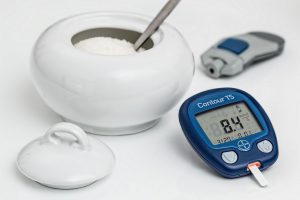As you get older, your health can change, and you might find yourself dealing with new medical issues. Fortunately, if you’re 65 or older, Medicare will take care of you. But Medicare isn’t only there to help you manage your conditions, you can – and should – also use it to get the screenings you need to keep on top of your health!
And right now, we’re talking to all the men out there: there are various health screenings suggested for men 65 and older that many men often put off, or don’t take seriously enough. But whether you’re avoiding getting a screening because you don’t think you need it, or because you think it will cost too much, you could end up missing the early warning signs of a disease that could be life-threatening. Medicare will cover the following three health screenings that every man should have, so talk to your doctor today!
1. Prostate Cancer

Prostate cancer is the second most common cancer for men in the United States, after skin cancer. In fact, according to the American Cancer Society, 1 in 8 men will be diagnosed with prostate cancer at some point in their life. Many men will not experience any symptoms when prostate cancer is in its early stages, so it’s important to get an annual exam to check for early warning signs, and catch any abnormalities as soon as possible.
For this reason, Medicare will begin paying for this screening starting at age 50. Medicare will cover both a digital rectal exam and a prostate-specific antigen, or PSA, test once a year.
2. Colorectal Cancer
Over the past couple of decades, colorectal cancer rates have been increasing. In fact, the Colorectal Cancer Alliance believes that the risk of men developing colorectal cancer in their lifetime is now 1 in 23. A lot of men put off having a screening for this type of cancer because they worry about invasiveness, or they might not realize that they are already in a risky age group, but delaying could mean missing a diagnosis. This is especially true since most men do not experience symptoms until the cancer has spread.
If you’re worried about the test for colorectal cancer, know that you have options: Medicare will cover various preventative screenings, including a physical occult blood test, flexible sigmoidoscopy, and colonoscopy.
3. Diabetes

Diabetes can lead to other serious medical conditions such as heart disease and stroke. In fact, did you know that nearly 70% of people with diabetes who are 65 or older die of some form of heart disease?
Medicare Part B will cover glucose lab tests if you have risk factors for diabetes including high blood pressure, obesity, high blood sugar, and a history of high cholesterol levels. Medicare will also cover a diabetes screening if you are overweight or have a family history of diabetes.
Extra Coverage
Taking care of yourself is important, and Medicare makes it easy to get the screenings you need. So don’t put off getting screened for the above conditions, because doing so could help you live a little longer.
And if you need more help paying for screenings and other medical expenses, a Medicare Supplement Plan can help. These plans can cover your Part A deductible and coinsurance costs, as well as your Medicare Part B copayment, coinsurance, and deductible. There are 10 different plans to choose from, and depending on which plan you choose, you could get anywhere from 75% coverage of your medical expenses all the way up to 100%. Each plan offers a range of coverage at different price points, so you’re sure to find one that’s right for you.
Need help finding the right plan? EZ can compare all 10 Medicare Supplement Plans and find the one that will meet your financial and medical needs. Our agents work with the top-rated insurance companies in the nation, which makes comparing plans easy, quick, and free – our services come at no cost to you because we just want to help you save money so you can focus on your health. To get free instant quotes on plans that cover your doctors, simply enter your zip code in the bar above, or to speak to a local licensed agent, call 888-753-7207.











